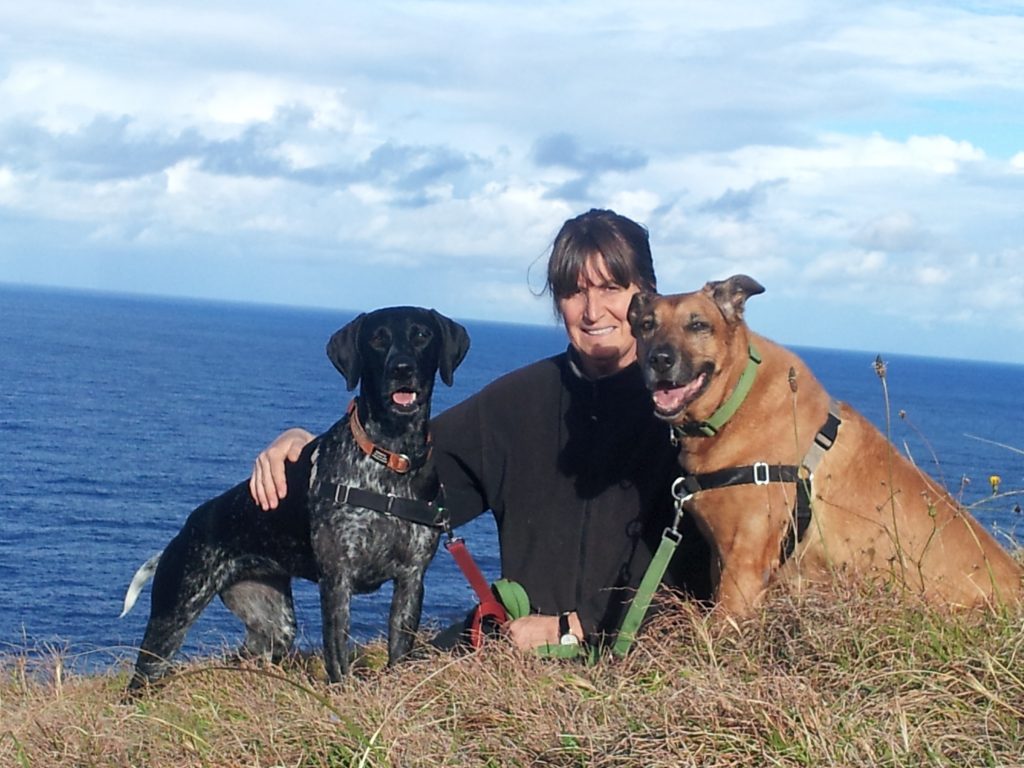Why is it so difficult for some to let go of the dominance myth and associated punishment based methods?
I just re-read an interview with John Bradshaw. If you have not read his book ‘In Defence of the Dog’ you are missing out.
No I will not write another blog on dominance. I think we are well and truly beyond that.

I am pondering the question why are there still ‘professionals’ out there who either steady fast insist that you have to dominate your dog and use aversive training methods or call themselves positive but still use punitive or aversive methods (physically manipulating the dog/puppy, using ‘no’ and ‘ah ah’)?

And why does this group of trainers have more exposure on TV and other media? Does the dominance group have the better marketing? Are these trainers more into self promotion? Do these trainers spend their money on marketing instead of further education? I don’t know.
But there might be something deeper and darker to it. Life is frustrating for some and anger often not very well controlled. The thought of being able to dominate (and hurt) someone weaker might have appeal to some. And if ‘permission’ is given by ‘experts’ to use those methods why would a certain group of dog owners not do it?
There might also be some out there who are just not educated enough and do not understand the basics of the learning theory. Another reason could be a lack of empathy.
We know using fear and intimidation will cause compliance but at what cost to the relationship. It seems common sense and we do not do it anymore with our children (well most of us anyway). So why do some insist on doing it to our dogs?
Shouldn’t we all know by now that ‘force is not compatible with mutual respect.’ [1] It also destroys trust and inhibits learning. Effective learning is a cooperative process in a trusting relationship.
There has to be an element of maintaining ‘cognitive consistency’ Leon Festinger (1957) proposed the cognitive dissonance theory, which states that a powerful motive to maintain cognitive consistency can give rise to irrational and sometimes maladaptive behavior.’[2] [3]
Dissonance can be reduced in three ways. Individuals could change their attitude. This is often difficult because people have trouble changing behavioural responses. Secondly, they could acquire new information that supports their original believes or thirdly they could reduce the importance of cognitions.
In dog training this means despite all scientific evidence that the dominance theory used in training is outdate, some reduce cognitive dissonance by acquiring ‘new’ information that supports their belief and reducing the importance of cognition. In this case it goes along the lines. It is better to use the dominance theory and its associated punishment based methods to save the dog and/or get the results fast. This is an argument commonly used by rescue groups and balanced trainers supporting these groups. Basically arguing that the result justifies the means, which is another fallacy in itself as punishment does not establish a different, more appropriate behaviour it merely suppresses the unwanted one. In addition to that the side effects can be severe.
Another reason could be that by now ‘balanced’ trainers are so committed to their outdated knowledge that they will very likely resist any new learning. They have said for years now that a force free way is not working. That means they now lack motivation and ability to change and the cost of learning is immense.[4]
Cost of learning used in the psychological sense. If you learn something new that makes your old knowledge obsolete you have to change everything. It means you are not just adding new knowledge but the new way replaces and questions the old way. It becomes even more problematic if there was a significant emotional investment in the previous believes. [5]
For balanced dog trainers this means they have now reached a ‘point of no return’. They cannot change without loosing face and significant investment monetary and time wise to catch up. It also means they will only become more resistant and probably defend their old ways til the end.
This means we can only wait for a generation change and until then have to go with Bradshaw: “They [dogs] need defending from people who persist in the old methods and don’t take any notice of science.”[6]

Or there is one other way: Switzerland introduced a licence for dog owners in 2008. A ‘side effect’ of this was that the dog training industry had to be regulated. All dog trainers now have to have a basic education including an assessment (total of 140 hours minimum), at least three years experience in dog training and having passed a practical exam with their own dog, similar to the Canine Good Citizen Award in Australia. These trainers then need to adhere to a code of ethics and do further education to keep the accreditation valid.[7]
How would that be for a start?
[1] http://www.dogbehaviorblog.com/2014/02/a-paradigm-shift-from-punitive-to-positive.html
[2] http://www.simplypsychology.org/cognitive-dissonance.html
[3] McLeod, S. A. (2014). Cognitive Dissonance. Retrieved from www.simplypsychology.org/cognitive-dissonance.html
[4] http://www.learningandteaching.info/learning/resistan.htm
[5]http://www.learningandteaching.info/learning/referenc.htm#ATHERTON
[6] http://www.theguardian.com/science/2011/jul/17/dog-training-john-bradshaw-animal-behaviour
[7] https://www.skg.ch/files/live/sites/skg/files/shared/Aus-%20und%20Weiterbildung/Reglement%20Ausbildung%20SKN.pdf
